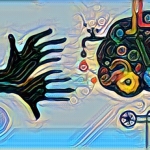Reassurance is a frequently advocated as a component of patient care in the treatment of pain and is included in many national practice guidelines for musculoskeletal pain management. Reassurance is usually recommended on the basis of an implicit conceptualisation model that assumes that information presented to patients effectively corrects mistaken beliefs about the nature or severity of the condition. This is thought to help reduce fears based on those beliefs, which, in turn, leads to healthier behavioural functioning. However, according to Linton et al.1 in a topical review published in Pain, the effectiveness of reassurance has a surprisingly thin evidence base and the current recommendations do not take into account the complexities of the pain experience.
According to Linton et al.1, reassurance is a complex process that involves interactions between a person’s experience, thoughts, beliefs, and emotions and occurring within a dynamic interaction between the patient and a practitioner. Reassurance is achieved if the patient changes their understanding, thoughts and/or behaviour. The method of reassuring is the behaviour of the practitioner and includes the provision of information, instructions and persuasion.
Reassurance must be relevant
Reassurance is commonly provided in the form of potentially corrective information and may involve physical explanations for symptoms, results of diagnostic tests, or prognosis. Although this kind of information may be accurate, it does not guarantee that a person will respond with reduced fear about the condition and changed behaviours. For example, evidence demonstrates that when patients receive information that is not directly related to their concerns or they experience the information as a lack of understanding of the legitimacy of their complaint (“don’t worry, it’s not serious”) they understandably respond by elaborating or asserting the symptoms more vigorously. Reassurance was accepted only when it included an explanation that was relevant to the patient’s concerns and linked physical and psychological factors.
The complexity of different people’s individual characteristics often influences the effects of providing reassurance. This may explain the inconsistencies in the current literature. For example, the effectiveness of information as reassurance can vary according to a patient’s level of health anxiety, with those experiencing higher levels responding less to attempts at reassurance. Furthermore, some studies have shown that reassurance, such as stressing the mildness of a problem and the likelihood of recovery, can actually increase disability and fear of future pain. Reassurance may also complicate a patient’s problems by reinforcing safety-seeking behaviours such as requests for information and diagnostic tests.
Reinforcing reassurance through experience
According to the authors, the current literature indicates that evidence for the effects of reassurance on pain-related problems is limited and inconsistent. They suggest that general recommendations for reassurance appear premature and a better understanding is needed. Although providing didactic information can help reduce fear and change behaviours in some patients and in some situations, direct attempts to change thoughts or beliefs by providing reassurance in the form of information may not be as effective as experience-based methods; for example, direct (in vivo) exposure or direct verification procedures.
The evidence is also suggestive that providing empathy and enhancing acceptance, rather than attempting to suppress fear and anxiety, may be an appropriate alternative in reducing the development of avoidance and other restrictive behaviours. The significant role of empathy in pain medicine was been championed in recent paper by Cohen et al2.
References:
1. Linton SJ, McCracken LM, Vlaeyen JW. Reassurance: help or hinder in the treatment of pain. Pain. 2008;134:5-8.
2. Cohen M, Quintner J, Buchanan D, Nielsen M, Guy L. Stigmatization of patients with chronic pain: the extinction of empathy. Pain Med. 2011 Nov;12(11):1637-43.
* Image c/o Jamie@flickr







Leave a Reply
Want to join the discussion?Feel free to contribute!